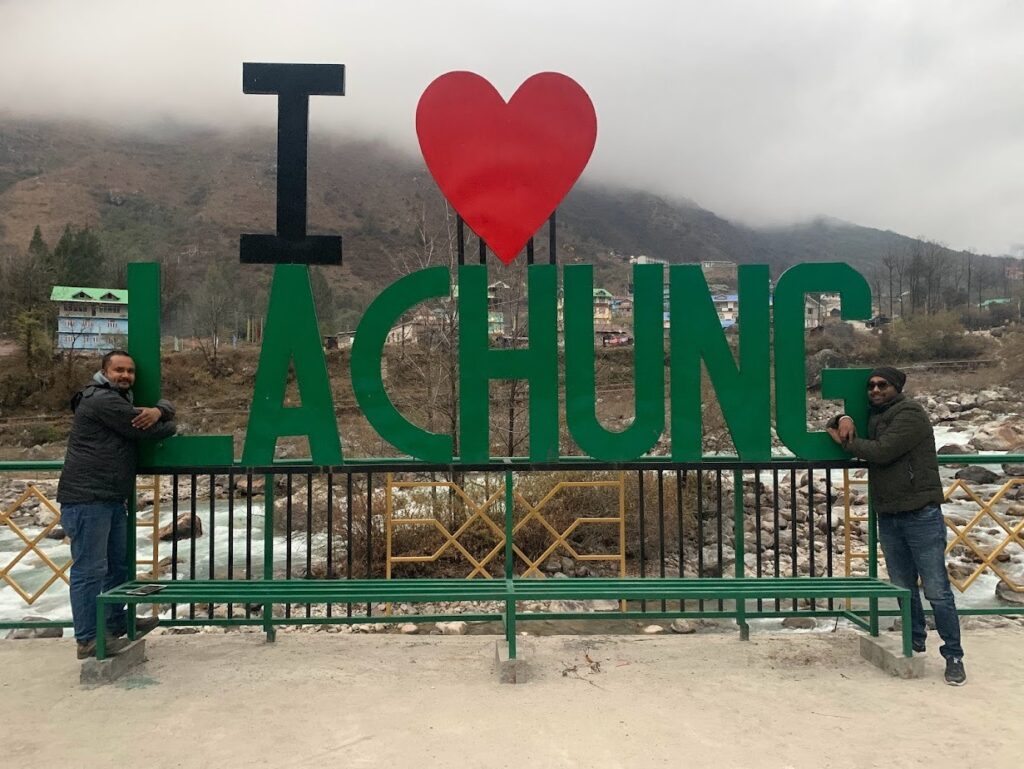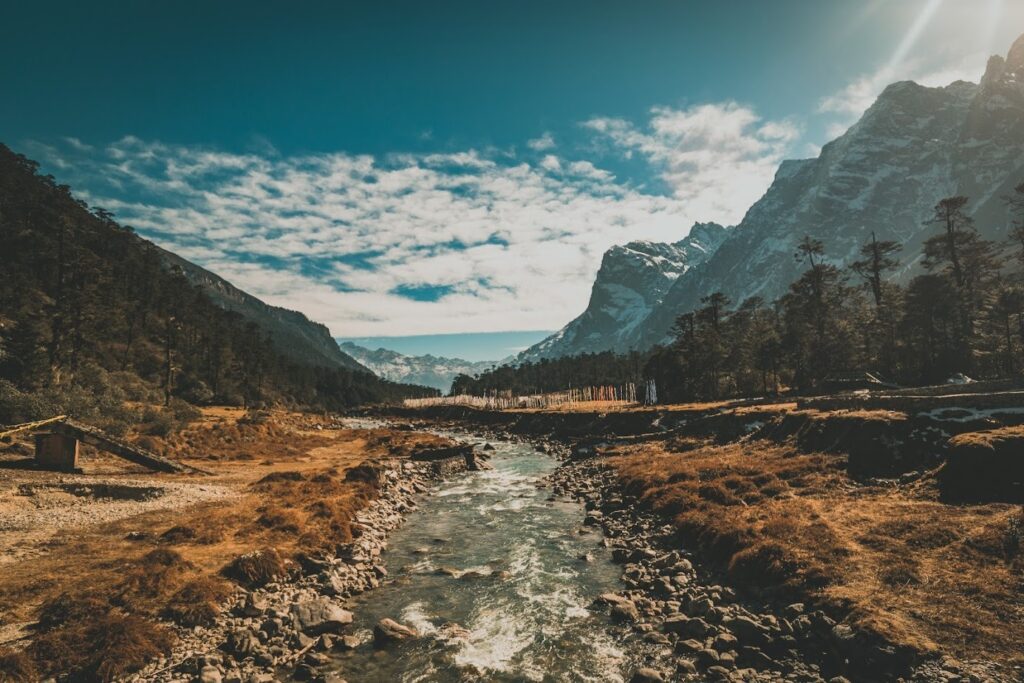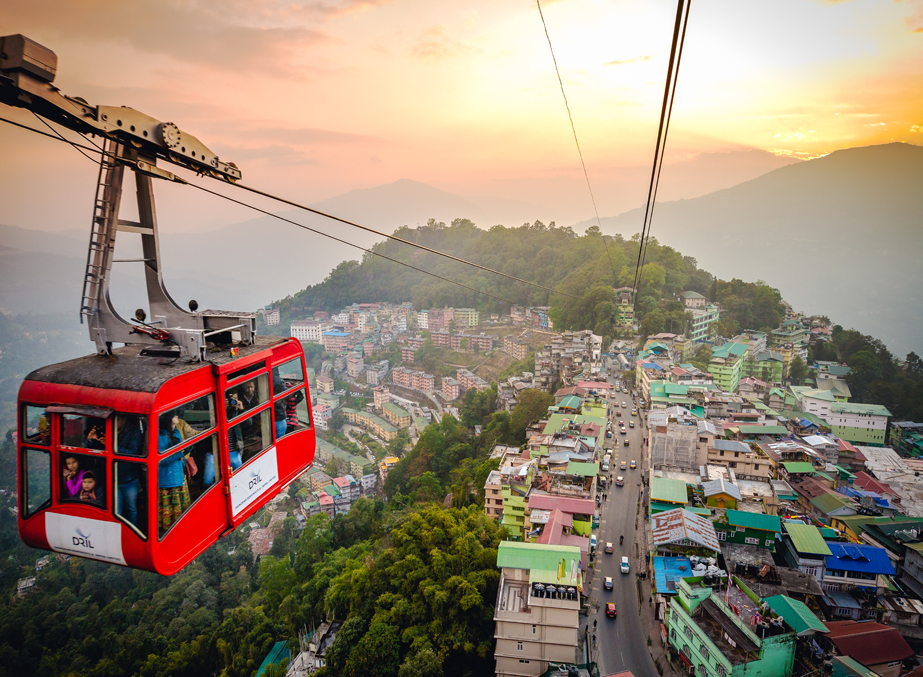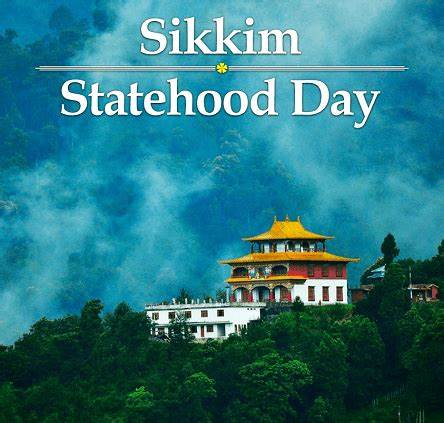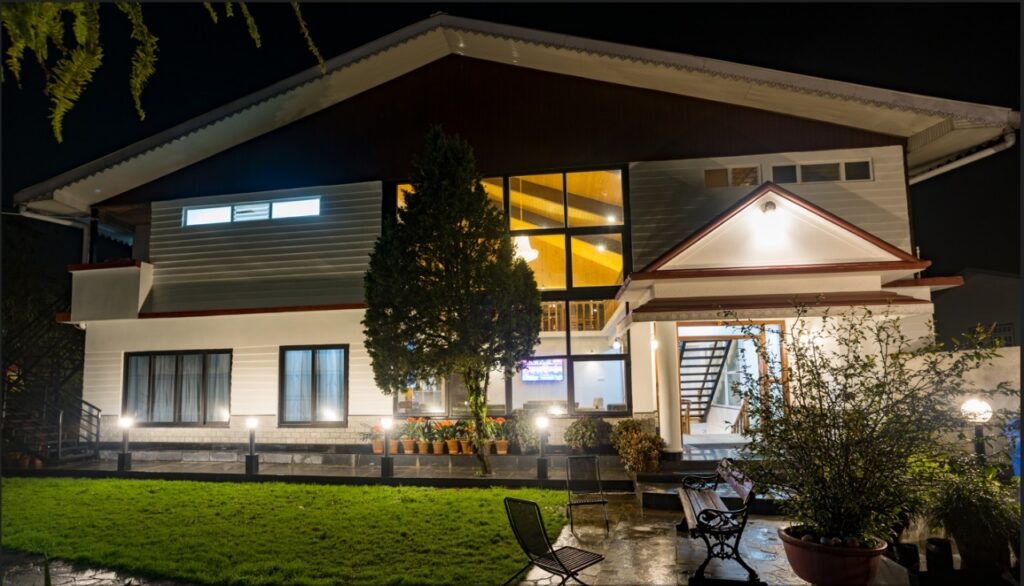Best North Sikkim Tour Packages
A North Sikkim tour is a mesmerizing journey into one of India’s most enchanting regions, where pristine natural beauty and rich cultural heritage converge. Nestled in the lap of the Himalayas, North Sikkim offers a captivating mix of soaring mountains, lush valleys, alpine meadows, cascading waterfalls, and charming villages. The tour promises an adventure that unveils the raw and untouched beauty of the Eastern Himalayas.
Your Tours and Travel Provides more than 200 best north Sikkim tour packages according to the preference of our customer .
more detail about blog about north sikkim tour package

Itinerary for North Sikkim Tour Packages
North Sikkim, a 4-day plan would be ideal. Here’s a suggested north sikkim itinerary:
Day 1:
Gangtok to Lachen
- Depart from Gangtok early in the morning for Lachen. The drive takes around 5-6 hours.
- En route, visit the Naga Waterfall and the Bhim Nala Waterfall for picturesque views.
- Have lunch at a local restaurant on the way.
- Arrive in Lachen in the afternoon and check into your hotel or guesthouse.
- Spend the evening exploring the village and interacting with the locals.
- Overnight stay in Lachen.
Day 2:
Gurudongmar Lake Excursion and Lachung
- Early in the morning, around 4 AM, start the excursion to Gurudongmar Lake. The drive takes approximately 3-4 hours, and the altitude is quite high, so be prepared for colder temperatures and reduced oxygen levels.
- Enjoy the breathtaking views of Gurudongmar Lake, surrounded by snow-capped peaks. It is one of the highest lakes in the world and holds great religious significance for locals and visitors alike.
- After spending some time at the lake, head back to Lachen.
- Have breakfast at the hotel and then check out.
- Drive from Lachen to Lachung, which takes around 2-3 hours.
- Arrive in Lachung and check into your hotel or guesthouse.
- Overnight stay in Lachung.
Day 3:
Yumthang Valley and Zero Point Excursion
- Early in the morning, head to Yumthang Valley, also known as the “Valley of Flowers.” The drive takes around 1-2 hours from Lachung.
- Spend time in Yumthang Valley, enjoying the breathtaking beauty of the alpine meadows and snow-capped mountains. If visiting during spring, witness the valley come alive with colorful flowers.
- Proceed further to Zero Point, which is about an hour’s drive from Yumthang. Experience the surreal landscapes and the thrill of being close to snow-covered peaks.
- Have a packed lunch at Zero Point, surrounded by nature’s grandeur.
- Return to Lachung in the afternoon.
- In the evening, you can relax and take in the tranquility of the village.
- Overnight stay in Lachung.
Day 4:
Lachung to Gangtok
- After breakfast, check out from the hotel in Lachung.
- Drive back to Gangtok, which takes around 5-6 hours.
- En route, you can stop at the Seven Sisters Waterfall and the Singhik Viewpoint to enjoy the panoramic views of the mountains.
- Have lunch at a local restaurant along the way.
- Arrive in Gangtok by late afternoon or evening.
- The rest of the day is at your leisure. You can explore the local markets or visit any sights you might have missed during your earlier stay in Gangtok.
- Overnight stay in Gangtok.
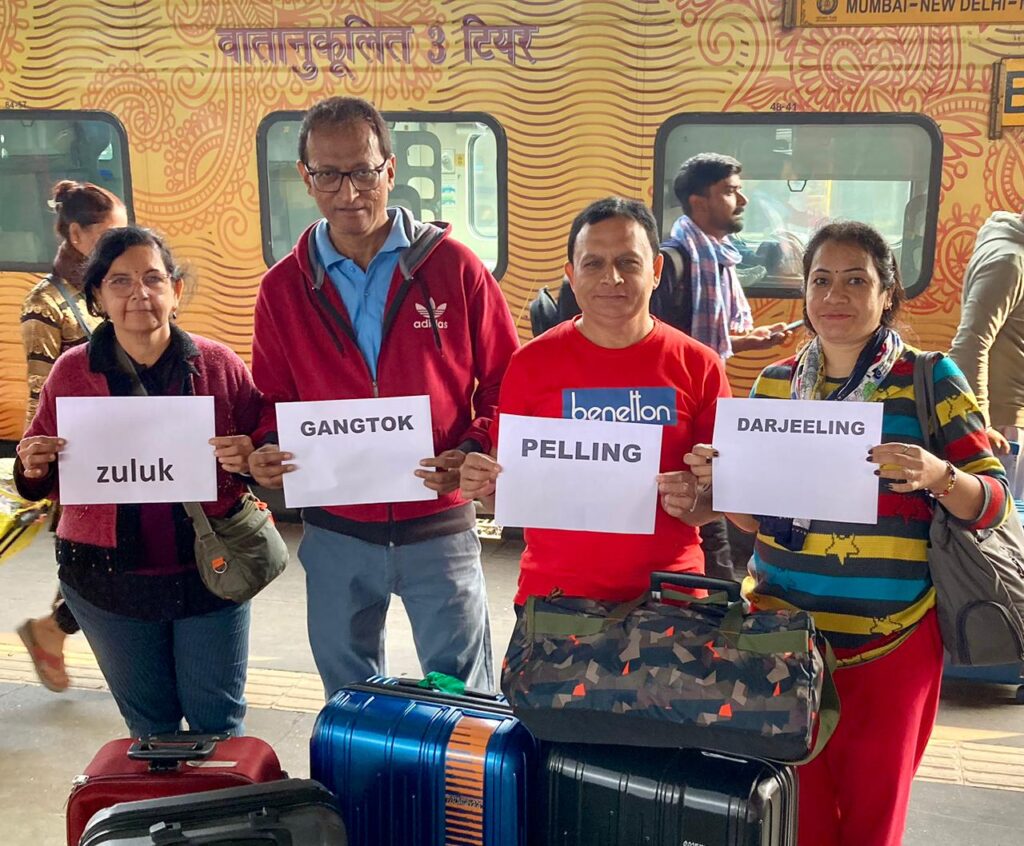
Related North Sikkim Tour Packages
East Sikkim Tour Package




South Sikkim Tour Package




West Sikkim Tour Package

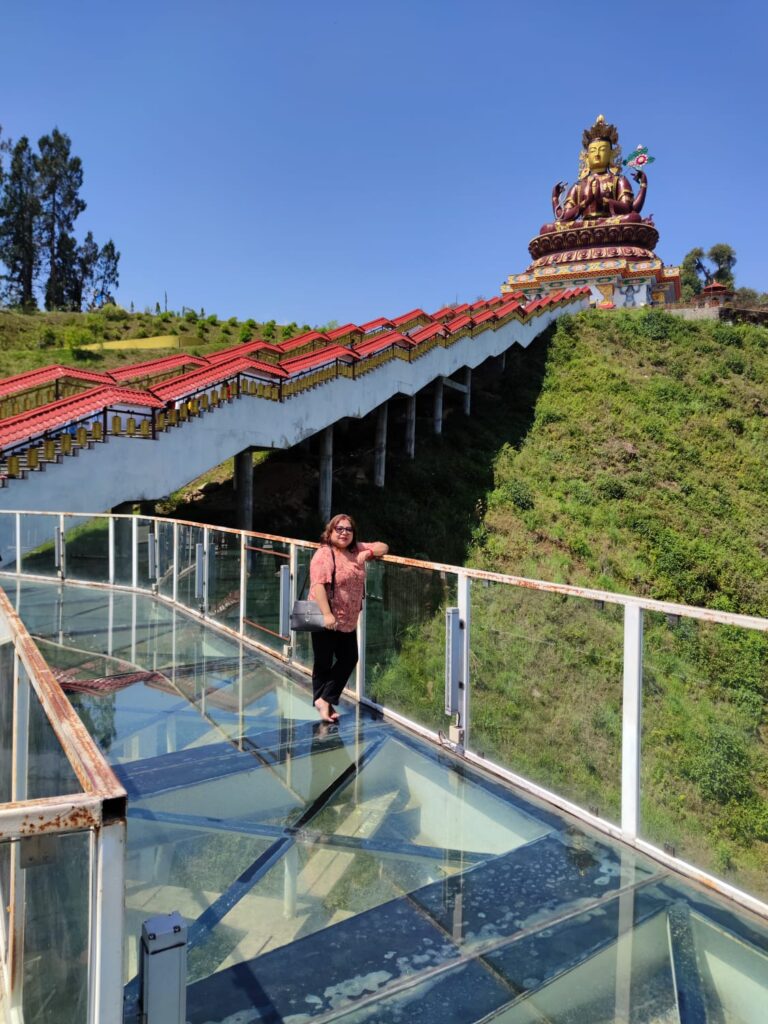


Trekking North sikkim Tour Packages
Goecha La Trek is a journey that speaks to the soul of adventurers and nature lovers alike.
Our trekking packages to Green Lake include all necessary permits, accommodation, guided tours, and transportation.
Dzongri Trek is like stepping into a realm where the air is fresher, the mountains grander, and the skies clearer.
Our trekking packages to Yumthang Valley include all necessary permits, accommodation, guided tours, and transportation.
Chopta Valley is a destination that transcends the ordinary.Thangu Valley is a serene and picturesque destination in North Sikkim that beckons travelers with its untouched beauty and tranquil ambiance.
NORTH SIKKIM TOUR PACKAGES BY THEME
ADVENTURE SIKKIM TOUR PACKAGE
BUDGET SIKKIM TOUR PACKAGE
TREKKING SIKKIM TOUR PACKAGE
SIKKIM GROUP TOUR PACKAGES
Day 1: Arrive in Gangtok and check into your hotel. Spend the day exploring the city on your own.
Day 2: Take a trek to Tsomgo Lake and visit the Nathula Pass. You can also opt for a yak ride if you wish.
Day 3: Head to Lachung and visit the Seven Sisters Waterfall on the way. Once you reach Lachung, check into your hotel and spend the rest of the day exploring the village.
Day 4: Start your day with a visit to Yumthang Valley, known as the Valley of Flowers. You can also indulge in adventure activities like skiing and snowboarding here.
Day 5: Travel back to Gangtok and spend the day white-water rafting on the Teesta River.
Day 6: Visit the Rumtek Monastery and the Enchey Monastery in Gangtok.
Day 7: Depart from Gangtok.
Day 1: Arrive in Bagdogra/NJP and travel to Gangtok. Check into your hotel and spend the day exploring the city on your own.
Day 2: Visit the Tsomgo Lake and the Baba Mandir. You can also opt for a yak ride if you wish.
Day 3: Take a day trip to Pelling and visit the Pemayangtse Monastery, Rabdentse Ruins, and the Khecheopalri Lake.
Day 4: Head to Lachen and visit the Seven Sisters Waterfall on the way. Once you reach Lachen, check into your hotel and spend the rest of the day exploring the village.
Day 5: Visit the Gurudongmar Lake, which is one of the highest lakes in the world. Return to Lachen and spend the night.
Day 6: Travel to Gangtok and spend the day exploring the city’s markets and restaurants.
Day 7: Depart from Gangtok.
Day 1: Arrive in Bagdogra/NJP and travel to Yuksom. Check into your hotel and spend the day acclimatizing to the altitude.
Day 2: Start your trek to Bakhim, which is a 6 km trek that takes around 4-5 hours. The trek passes through dense forests and offers beautiful views of the Himalayan range.
Day 3: Trek from Bakhim to Dzongri, which is a 10 km trek that takes around 6-7 hours. The trek passes through meadows and rhododendron forests.
Day 4: Spend the day exploring Dzongri and trek to Dzongri Top for a panoramic view of the Himalayan range.
Day 5: Trek from Dzongri to Thangsing, which is a 8 km trek that takes around 5-6 hours. The trek passes through meadows and offers beautiful views of the surrounding peaks.
Day 6: Trek from Thangsing to Goecha La, which is a 16 km trek that takes around 8-9 hours. Goecha La is a high-altitude pass that offers stunning views of the Kanchenjunga mountain range.
Day 7: Trek back to Thangsing and then to Tshoka. Spend the night in Tshoka.
Day 8: Trek back to Yuksom and spend the night in a hotel.
Day 9: Depart from Yuksom
Day 1: Arrive in Bagdogra/NJP and travel to Gangtok. Check into your hotel and spend the day exploring the local markets and restaurants.
Day 2: Visit the famous Rumtek Monastery, Hanuman Tok, and the Gangtok Ropeway.
Day 3: Visit the Tsomgo Lake, Baba Mandir, and Nathu La Pass. These places require special permits, so make sure to obtain them in advance.
Day 4: Travel to Lachen and visit the Seven Sisters Waterfalls and the Kabi Longstok. Spend the night in a hotel in Lachen.
Day 5: Visit the Gurudongmar Lake, which is one of the highest lakes in the world and offers stunning views of the surrounding mountains. Travel to Lachung and spend the night in a hotel.
Day 6: Visit the Yumthang Valley, which is also known as the ‘Valley of Flowers’ due to its colorful blooms during the spring season. Return to Gangtok and spend the night in a hotel.
Day 7: Visit the famous Tashi Viewpoint, Enchey Monastery, and the Banjhakri Falls. In the evening, enjoy a traditional cultural program.
Day 8: Depart from Bagdogra/NJP.
North Sikkim Honeymoon Tour Package
In the canvas of India’s magnificent landscape, Sikkim emerges as a gem, gleaming with pristine beauty, snow-kissed peaks, and a vibrant culture. For couples embarking on the journey of matrimony, choosing a honeymoon destination becomes more than just a decision; it’s about finding a place where memories are forged, bonds are strengthened, and love blossoms unreservedly. And what honeymoon better way to immerse in this romantic escapade than with Your Tours & Travels, the leading DMC for Sikkim. As you contemplate weaving tales of romance, let’s delve into why the Sikkim honeymoon north sikkim tour packageoffered by Your Tours & Travels are a perfect fit for couples like you. We can plan best north sikkim tour package for couple .
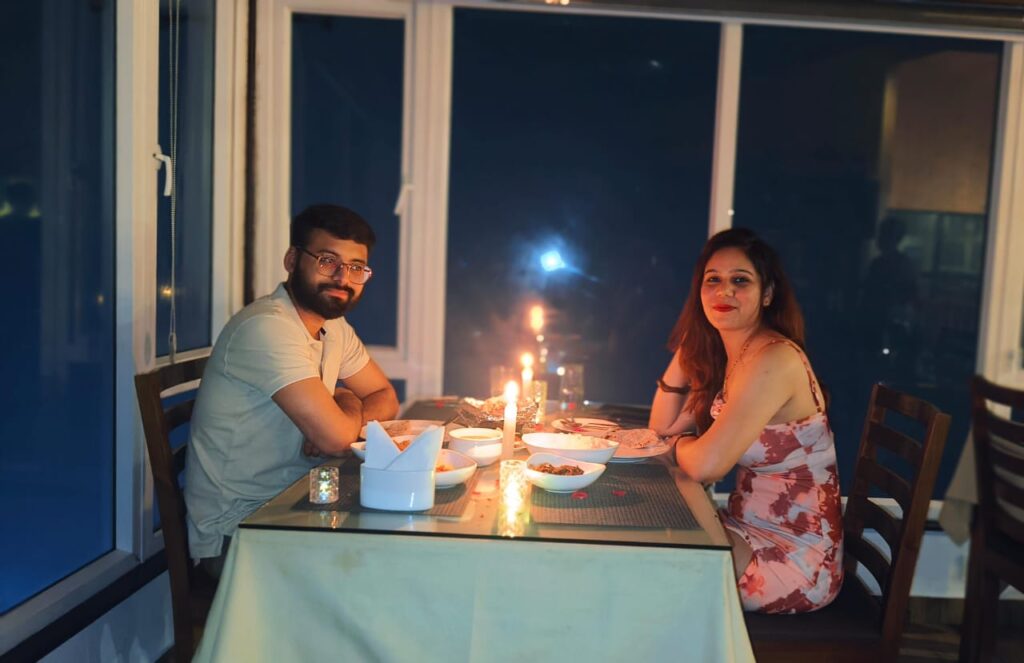
Snowfall in North sikkim
Some people love to visit north sikkim because of , below is given the graphy of snow , so one who is the snow lover , can book the north sikkim tour packages according to the preference month . book your north sikkim package according to the snow .
Places To Visit In North Sikkim
n a world teeming with cities of steel and glass, there lies a jewel nestled amidst the colossal Himalayan ranges, waiting to share its secrets. This jewel is none other than Sikkim, a mosaic of cultures, traditions, and scenic vistas that defy imagination. And who better to guide you through this paradise than Your Tours & Travels, the premier DMC for Sikkim, promising not just a journey, but an experience.
Every traveller’s quest starts with a question – “What are the best places to visit in North Sikkim?” With Your Tours & Travels, this question does not merely find an answer; it embarks on a narrative. Sikkim is not just about places; it is about stories. Stories that transcend generations, stories that make you feel alive, and stories that let you discover yourself amidst the vastness of nature. “The world is a book, and those who do not travel read only one page.”- Augustine
1. Gurudongmar Lake: A Himalayan Marvel
Located at an altitude of 17,800 ft in North Sikkim, India, Gurudongmar Lake is one of the highest freshwater lakes in the world. Revered by Buddhists, Sikhs, and Hindus alike, the lake is named after Guru Padmasambhava, fondly called Guru Rinpoche, who is believed to have visited the lake in the 8th century. Legend has it that a portion of the lake remains unfrozen even in harsh winters due to blessings bestowed by the Guru. making it a challenging destination for travellers. Still, those who make the journey are rewarded with a mesmerizing view and an experience of tranquillity know more
- Yumthang Valley: The Haven of Flowers
Often dubbed the ‘Valley of Flowers’ of Sikkim, Yumthang Valley is a scenic marvel located at an elevation of 3,564 meters (about 11,693 feet) in the northeastern Indian state. Situated approximately 150 kilometres north of Gangtok, it is a confluence of flora and fauna, displaying a vibrant array of colours, especially during spring when a plethora of rhododendrons, primulas, and other alpine flowers bloom in abundance. know more - Thangu Valley: The Majestic Panorama
- Mt Katao: The Majestic Elevation
Located near Lachung in North Sikkim, India, Mt. Katao stands as a magnificent sentinel, offering a mesmerizing blend of natural beauty and adventure opportunities. At an altitude of approximately 15,000 feet, this majestic mountain is often draped in a white blanket of snow, making it a winter wonderland for enthusiasts of snow-based sports. know more
- Lachung & Lachen: The Twins of Himalayan Tranquillity
- Shingba Rhododendron Sanctuary: Sikkim’s Mollifying Visit
- Green Lake Trek: The Surreal Stopver
- Mangan: The Soothing Wonder of Sikkim
- Goechala Trek: The Trail of Treasures
- Khangchendzonga National Park: Sikkim’s Enchating Treasure
- Chungthang: Where Sikkim Unfolds Its Majestic Tale
Quick Information About North Sikkim
| Area | 4226 sq km |
|---|---|
| Coordinates | 27°31′N 88°32′E |
| Language | Nepali, Bhutia and Lepcha |
| Popular Treks of North Sikkim | Green Lake Trek, Tosar lake Trek, |
| Popular Places to Visit in North Sikkim | Gurudongmar lake, Lachung, Lachen, Yumthang Valley, Seven Sisters Waterfall, Cholamu Lake, Chungthang and Mangan etc. |
| Best Time to Visit North Sikkim | March to May and October to Mid-December |
| Popular Lakes of North Sikkim | Cholamu Lake and Gurudongmar Lake |
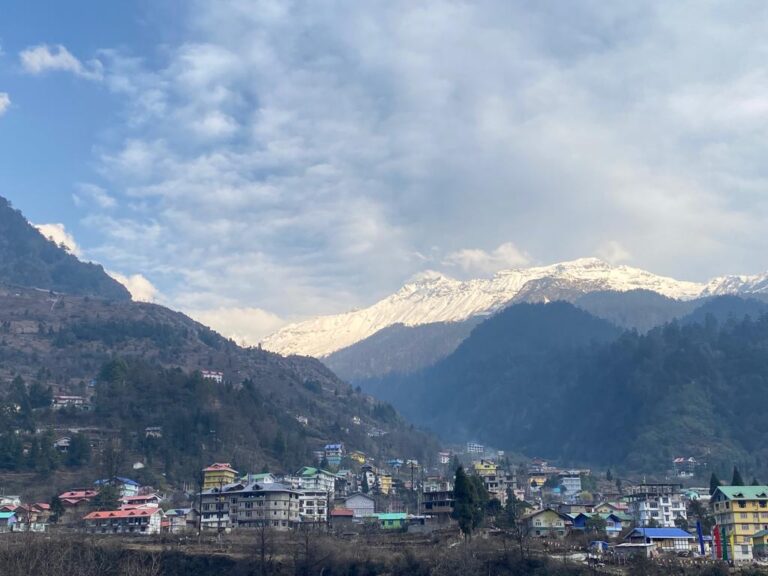
DMC For Sikkim
Sikkim, a jewel in the northeastern part of India, is an untouched paradise, a magical blend of nature, culture, and spirituality. Tucked between Nepal, Bhutan, and Tibet, this enchanting state is a haven for those seeking serenity, adventure, and natural beauty. But why should you plan your trip to Sikkim with us? Simply put, Your Tours & Travels is the best DMC for Sikkim, and here is why.
North Sikkim Tour Packages Cost
| Package | price |
|---|---|
| North Sikkim tour package 2 night 3 days | 30000 |
| North Sikkim Tour 4 Nights 5 days | 50000 |
| 3 Nights 4 days North Sikkim package | 40000 |
| North Sikkim Tour Package for 7 Days / 8night | 70000 |
Vital Points Before You Choose North Sikkim Tour Packages
North Sikkim is a breathtakingly beautiful region in the Indian state of Sikkim, known for its pristine landscapes, lush green valleys, and stunning Himalayan vistas. It’s a popular destination for nature lovers and adventure seekers. When planning a North Sikkim tour, you can consider various tour packages that cater to different interests and durations. Here are some key aspects to consider when looking for North Sikkim tour packages:
Duration:
- North Sikkim tour packages can range from 2 to 7 days or more, depending on the places you want to visit and the activities you’d like to include in your itinerary.
Itinerary:
- A typical North Sikkim itinerary includes destinations like Gangtok (the capital of Sikkim), Lachen, Lachung, Yumthang Valley, Gurudongmar Lake, and more. Make sure the package you choose covers the places you want to visit.
Inclusions:
- Check what’s included in the package. This may include accommodation, meals, transportation, permits, and guided tours. Ensure that it meets your preferences and budget.
Permits:
- Certain areas in North Sikkim require special permits for tourists. Tour operators often assist in obtaining these permits, but confirm that it’s included in your package.
Season:
- North Sikkim experiences different weather conditions throughout the year. The best time to visit is during the spring and summer months (April to June) when the weather is pleasant. However, packages may be available year-round, so be sure to select the right season for your preferences.
Budget:
- North Sikkim tour packages vary in price. Determine your budget and choose a package that fits within it. Keep in mind that the cost may vary depending on the level of accommodation and services included.
Activities:
- Depending on your interests, you can choose packages that offer adventure activities like trekking, river rafting, and wildlife excursions or those focused on sightseeing and relaxation.
Group Size:
- Consider whether you want to join a group tour or prefer a private tour. Group tours are often more cost-effective, while private tours offer more flexibility and personalized experiences.
Tour Operator:
- Research reputable tour operators or travel agencies that offer North Sikkim packages. Read reviews and check their credentials to ensure a safe and enjoyable trip.
Travel Insurance:
- It’s a good idea to purchase travel insurance to cover unexpected events during your trip, such as cancellations, medical emergencies, or travel disruptions.
Remember to plan your North Sikkim tour well in advance, especially during the peak tourist season, as availability can be limited. It’s also essential to be prepared for varying weather conditions and high altitudes, so consult with your tour operator or a healthcare professional if you have any health concerns. With proper planning, you can enjoy the natural beauty and cultural richness of North Sikkim to the fullest.
Unlocking Adventures in the Himalayan Wonderland: 8 Activities to Explore with Your Tour & Travels in North Sikkim
Nestled in the lap of the Himalayas, North Sikkim is a treasure trove of experiences waiting to be uncovered. Your Tour & Travels, with its expertise in crafting unforgettable journeys, invites you to explore the enchanting landscapes of North Sikkim through a spectrum of activities that showcase the region’s cultural richness, natural splendor, and adventurous spirit spectrum of activities that showcase the region’s cultural richness, natural splendor, and adventurous spirit.
Embrace Cultural Immersion
Your journey with Your Tour & Travels begins with a unique cultural immersion experience in Gangtok, the capital city of Sikkim. Our guided tours take you through the vibrant streets and markets, where the hustle and bustle reveal the daily life and cultural nuances of the locals. Visit monasteries like the Rumtek Monastery, where ancient traditions come to life, and learn about the spiritual heritage that shapes the identity of Sikkim.
Venture into Highland Havens – Lachen and Lachung
A hallmark of Your Tour & Travels’ North Sikkim tour packages is the exploration of Lachen and Lachung, two picturesque villages that offer a glimpse into traditional Himalayan life. Lachen, with its high-altitude charm, provides an opportunity to interact with the warm-hearted locals and witness their unique way of life. In Lachung, the serenity of the surroundings and the timeless appeal of the village become a canvas for unforgettable memories.
Spiritual Sojourn to Gurudongmar Lake
No journey to North Sikkim is complete without a visit to the sacred Gurudongmar Lake. With Your Tour & Travels, this experience goes beyond the ordinary. As part of our North Sikkim tour plan, you’ll not only witness the breathtaking beauty of the lake but also engage in moments of reflection and spiritual connection. The journey to Gurudongmar Lake becomes a pilgrimage, with the shimmering waters serving as a backdrop to your spiritual sojourn.
Explore the Verdant Yumthang Valley
.
Yumthang Valley, often referred to as the Valley of Flowers, awaits your exploration with Your Tour & Travels. Amidst meadows adorned with alpine flowers and surrounded by snow-capped peaks, the valley offers a serene retreat into nature’s embrace. Capture the beauty of this natural wonder, breathe in the crisp mountain air, and let the tranquility of Yumthang Valley leave an indelible mark on your senses.
Adventure in the Mountains – Trekking and Hiking
For the adventure enthusiasts, Your Tour & Travels curates experiences that take you off the beaten path. North Sikkim is a haven for trekking and hiking, and our expertly guided excursions ensure that you traverse the scenic landscapes at your pace. Whether it’s a short trek to nearby viewpoints or a more challenging hike through pristine forests, each step becomes a part of your Himalayan adventure.
Wildlife Encounters in Kanchenjunga National Park
Your Tour & Travels takes you deeper into the natural wonders of North Sikkim with a visit to Kanchenjunga National Park. Home to a diverse range of flora and fauna, including the elusive red panda, the park offers wildlife enthusiasts a chance to witness the biodiversity of the Himalayas. With our guided tours, you’ll explore the park responsibly, respecting the delicate ecosystem that thrives in this sanctuary.
A Gourmet Journey Through Sikkimese Cuisine
One of the delights of traveling with Your Tour & Travels is the culinary journey that accompanies your exploration. Savor the flavors of Sikkimese cuisine, from traditional momos and thukpa to local specialties that reflect the region’s cultural diversity. Our curated dining experiences ensure that every meal is not just a part of the journey but an exploration of Sikkim’s rich gastronomic heritage.
Leisurely Strolls and Photography Expeditions
In North Sikkim, every corner is a photo opportunity waiting to be seized. Your Tour & Travels encourages leisurely strolls through the villages, allowing you to interact with locals, witness their daily activities, and capture candid moments. Our guides, with their local insights, help you discover the hidden gems that make for stunning photographs, ensuring that your North Sikkim adventure is preserved in frames
Highlights of Your North Sikkim Package
Imagine standing at the shores of Gurudongmar Lake, the pristine waters reflecting the azure sky and snow-clad peaks. Envision wandering through the valleys of Yumthang, where every step reveals a new burst of color in the form of alpine flowers. These are the highlights of our North Sikkim tour packages — experiences that linger in your heart long after the journey concludes.
Our North Sikkim tour packages encompass visits to the sacred Gurudongmar Lake, the charming village of Lachen, the timeless allure of Lachung, and the breathtaking Yumthang Valley. Each destination has been handpicked to showcase a different facet of North Sikkim’s beauty, ensuring that you get a comprehensive and immersive experience.
The Your Tour & Travels Difference in North Sikkim Packages
What sets Your Tour & Travels apart is our commitment to excellence in every aspect of your journey. From the moment you inquire about our North Sikkim tour packages to the time you bid farewell to this Himalayan haven, we prioritize your comfort, safety, and satisfaction.
Our team of experienced travel experts is not just knowledgeable about North Sikkim; they are passionate about it. We go the extra mile to ensure that your North Sikkim tour plan is seamless, stress-free, and exceeds your expectations. Our local guides add a personal touch to your journey, sharing insights, stories, and hidden gems that you won’t find in guidebooks.
Accommodations and Culinary Delights
A vital component of any travel experience is accommodation, and our North Sikkim tour packages include stays in handpicked hotels and lodges. Whether it’s a cozy guesthouse in Lachen or a mountain retreat in Lachung, we ensure that your resting places are as memorable as the destinations themselves.
Culinary adventures are an integral part of our North Sikkim packages. You’ll have the opportunity to savor local delicacies, from traditional Sikkimese dishes to flavours that are as diverse as the landscape. Dining is not just a necessity; it’s a cultural exploration, and we ensure that your taste buds dance to the rhythms of Sikkim.
Booking Your North Sikkim Tour Package
Booking your North Sikkim tour packages with Your Tour & Travels is a straightforward and personalized process. Our user-friendly website allows you to browse through various packages, each detailed with inclusions, itinerary highlights, and pricing. Once you’ve selected the package that resonates with your travel aspirations, our booking process is seamless, transparent, and secure.
Our customer support team is always at your service, ready to assist with any queries or customization requests. We believe in open communication and transparency, ensuring that you have all the information you need to make your North Sikkim tour packages an informed and delightful experience.
Sustainable Travel in North Sikkim with Your Tour & Travels
As responsible stewards of travel, Your Tour & Travels is committed to promoting sustainable and responsible tourism practices. Our North Sikkim tour packages are crafted with an awareness of the delicate Himalayan ecosystem and respect for the local communities. We encourage travellers to embrace eco-friendly practices during their journey, leaving behind only footprints and taking with them memories that last a lifetime.
Your North Sikkim Adventure Awaits
In the heart of the Himalayas, a realm of unparalleled beauty beckons. Your Tour & Travels is not just a facilitator of journeys; we are architects of experiences. With our North Sikkim tour packages, we invite you to immerse yourself in the beauty of the Himalayas, to explore, to discover, and to create memories that transcend the ordinary.
Your adventure begins with a click, a call, or a visit to our website. Your North Sikkim tour awaits, promising not just a vacation but an odyssey of beauty, culture, and serenity. Join us as we unravel the enchanting tapestry of North Sikkim, one carefully crafted package at a time.
Entry Formalities for North Sikkim: What You Need to Know Before You Go
Planning a trip to the serene and picturesque region of North Sikkim? This guide will help you navigate the entry formalities and ensure you have a smooth and enjoyable journey. Additionally, discover our exclusive North Sikkim tour packages designed to offer you the best experience.
Inner Line Permit (ILP)
Mandatory Permit: To enter North Sikkim, all travelers, including Indian nationals, must obtain an Inner Line Permit (ILP). This permit is essential due to the sensitive nature of the region, which shares international borders.
How to Obtain the ILP:
- Through Authorized Travel Agencies: Most travel agencies in Sikkim are authorized to process ILPs. When you book a tour package, the agency typically handles the permit process for you.
- Online Portal: You can also apply for the ILP through the official Sikkim tourism website. Ensure you apply a few days before your planned travel date.
Documentation Required
To obtain the ILP, you will need the following documents:
- Valid Government ID Proof: Acceptable forms include Aadhar Card, Passport, Voter ID, or Driver’s License.
- Passport-Sized Photos: Keep multiple copies ready for permit processing.
- Application Form: Complete the application form available at the tourism office or online portal.
Special Permits for Restricted Areas
Certain areas in North Sikkim, such as Gurudongmar Lake and Yumthang Valley, require additional permits. Ensure your travel agency arranges these permits in advance.
Foreign Nationals
Foreign nationals need to secure a Restricted Area Permit (RAP) in addition to the ILP. This can be obtained through authorized agencies, and it’s advisable to consult with them for detailed procedures.
Everything You Need to Know About the Restricted Area Permit (RAP) for North Sikkim
North Sikkim, with its pristine landscapes and breathtaking views, is a must-visit destination for many travelers. However, due to its proximity to international borders and its ecological sensitivity, certain areas in North Sikkim are designated as restricted and require a Restricted Area Permit (RAP) for entry. Here’s a comprehensive guide to help you understand the process and requirements for obtaining a RAP.
What is a Restricted Area Permit (RAP)?
A Restricted Area Permit (RAP) is a special permit required to visit certain areas in North Sikkim. This permit is necessary for both Indian and foreign nationals due to the sensitive nature of these regions.
Key Areas Requiring RAP
- Gurudongmar Lake: One of the highest lakes in the world, known for its stunning beauty and spiritual significance.
- Yumthang Valley: Also known as the Valley of Flowers, it is famous for its natural beauty and vibrant flora.
- Zero Point: Located at an altitude of 15,300 feet, offering magnificent views of snow-clad mountains.
- Thangu and Chopta Valley: Known for their picturesque landscapes and serene environment
Add Your Heading How to Obtain a Restricted Area Permit For Indian Nationals
- Application Through Travel Agencies: Most travelers opt to obtain the RAP through authorized travel agencies. These agencies handle the paperwork and processing, making it a hassle-free experience.
- Documents Required:
- Valid Government ID Proof (Aadhar Card, Passport, Voter ID, or Driver’s License).
- Passport-Sized Photos.
- Application Process:
- Submit the necessary documents and photos to the travel agency.
- The agency will process the permit and provide it before your travel date.
Add Your Heading How to Obtain a Restricted Area Permit
For Foreign Nationals:
- Additional Permits Required: Foreign nationals need to secure both a Restricted Area Permit (RAP) and an Inner Line Permit (ILP).
- Application Process:
- Apply through authorized travel agencies or directly at Sikkim Tourism Offices in Gangtok.
- Provide necessary documents including a valid passport, visa, and passport-sized photos.
- Approval Time:
- The processing time can vary, so it’s advisable to apply well in advance.
Important Tips for Travelers
- Apply Early: Start the application process at least a week before your planned travel date to avoid any delays.
- Travel with Authorized Agencies: To ensure a smooth and hassle-free experience, travel with agencies authorized by the Sikkim Tourism Department.
- Carry Multiple Copies: Keep multiple copies of your permits and ID proofs with you at all times.
- Respect Local Regulations: Follow all guidelines and regulations in restricted areas to ensure your safety and the preservation of the environment.
More Exploration to North Sikkim
Questions related to Sikkim
- Which is cheaper Darjeeling or Gangtok?
- Accommodation: Both Darjeeling and Gangtok offer a range of accommodation options, from budget guesthouses to luxury hotels. The prices can vary significantly depending on the type of accommodation and its location within the city. Generally, Gangtok may have slightly lower accommodation costs compared to Darjeeling, but this can vary based on factors such as the time of year and specific accommodations.
- Food: Food prices can also vary, but in general, eating out at local restaurants and street food stalls is relatively affordable in both Darjeeling and Gangtok. However, dining at upscale or touristy restaurants can be more expensive.
- Transportation: The cost of transportation between Darjeeling and Gangtok can vary depending on the mode of transport you choose. Shared taxis and buses are common ways to travel between the two cities, and they are usually reasonably priced. However, if you opt for private transportation or hire a car, it will be more expensive.
- Sightseeing and Activities: The cost of sightseeing and activities will depend on your interests and the specific places you want to visit. Both cities offer various attractions, some of which may require entrance fees. Activities like trekking or guided tours will also have their own costs.
- Shopping: Darjeeling and Gangtok are known for their local handicrafts and souvenirs. Prices for these items can vary widely based on their quality and where you purchase them. Bargaining is common in local markets, so you may be able to get better deals with some negotiation skills.
- How to plan Sikkim Darjeeling tour?
- Set a Budget:
- Determine how much you're willing to spend on your trip. This will help you make choices regarding accommodations, transportation, and activities.
- Decide on the Duration:
- Decide how many days you want to spend in Sikkim and Darjeeling. A typical itinerary is around 7-10 days, but you can adjust based on your preferences.
- Research and Create an Itinerary:
- Research the places you want to visit in Sikkim and Darjeeling. Common attractions include Gangtok, Pelling, Tsomgo Lake, Nathula Pass, Darjeeling, and Tiger Hill.
- Create a rough itinerary, allocating days to each location and activity. Make sure to include travel time between destinations.
- Plan the Best Time to Visit:
- Consider the weather when planning your trip. The best time to visit is typically from March to June and from September to November when the weather is pleasant.
- Book Flights and Accommodations:
- Book your flights to Bagdogra Airport (IXB) or nearest airport, depending on your point of entry.
- Reserve accommodations in advance, especially during the peak tourist season. Choose hotels, guesthouses, or homestays that fit your budget and preferences.
- Arrange Transportation:
- Decide on how you will travel between destinations. Options include hiring a private cab, using public buses, or renting a car.
- Consider hiring a local guide for certain activities or treks to make the most of your experience.
- Obtain Necessary Permits:
- Check if you need permits for specific areas, such as Nathula Pass. These permits can be obtained through the local tourism department or your travel agency.
- Pack Accordingly:
- Pack clothing suitable for the weather during your visit. Layers are advisable due to temperature variations.
- Don't forget essential items like comfortable walking shoes, medications, and necessary documents.
- Plan Activities and Tours:
- Research and book activities and tours in advance, such as trekking, river rafting, or tea estate visits.
- Check for any cultural festivals or events happening during your visit that you might want to attend.
- Learn About Local Culture:
- Familiarize yourself with the local customs, traditions, and etiquette to show respect to the local people.
- Be Flexible:
- Be prepared for changes in plans due to unforeseen circumstances like weather conditions. Have a backup plan for such situations.
- Stay Informed About COVID-19 Guidelines:
- Keep track of any travel restrictions, health protocols, and safety guidelines related to COVID-19 that may apply during your visit.
- Travel Insurance:
- Consider purchasing travel insurance to cover unexpected emergencies or trip cancellations.
- Enjoy Your Trip:
- Finally, relax, enjoy the breathtaking scenery, and immerse yourself in the culture and beauty of Sikkim and Darjeeling.
- Set a Budget:
- Sikkim and Gangtok same?Sikkim and Gangtok are not the same, but they are closely related. Sikkim is a state in northeastern India, while Gangtok is the capital and largest town of Sikkim. Here's a bit more detail about each:
- Sikkim:
- Sikkim is a state located in the northeastern part of India, nestled in the eastern Himalayas.
- It is known for its stunning natural beauty, including lush green valleys, snow-capped peaks, pristine lakes, and dense forests.
- Sikkim is one of the smallest states in India by land area but is rich in biodiversity and cultural diversity.
- The state offers a wide range of attractions and activities, including trekking, mountaineering, wildlife viewing, and visits to monasteries and historical sites.
- Sikkim shares its borders with Tibet (China) to the north, Bhutan to the east, Nepal to the west, and the Indian state of West Bengal to the south.
- Gangtok:
- Gangtok is the capital and largest town in Sikkim.
- It serves as the political, cultural, and economic center of the state.
- Gangtok is situated in the eastern part of Sikkim and is known for its scenic beauty and pleasant climate.
- The town is surrounded by the Himalayan ranges and offers breathtaking views of the mountains.
- Gangtok is a popular tourist destination and serves as a gateway for travelers exploring various parts of Sikkim.
- It has a mix of modern amenities and traditional charm, with attractions like monasteries, markets, and viewpoints.
- Sikkim:
- How many days required to visit Gangtok?The number of days required to visit Gangtok can vary depending on your interests, the specific places you want to explore in and around Gangtok, and your travel pace. However, a typical itinerary for Gangtok usually ranges from 2 to 4 days. Here's a general guideline for how you can plan your time in Gangtok:
- 2 Days in Gangtok:
- If you have limited time, you can spend a quick two days in Gangtok to see some of its major attractions. This would involve a somewhat rushed schedule but can give you a taste of the town.
- Day 1: Explore the city center, visit attractions like MG Marg (the main market), Enchey Monastery, and Hanuman Tok.
- Day 2: Take a day trip to the nearby attractions, such as Rumtek Monastery, Banjhakri Falls, and the Namgyal Institute of Tibetology.
- 3 Days in Gangtok:
- Spending three days in Gangtok allows for a more relaxed experience, and you can explore additional places.
- Day 1 and Day 2: Follow the itinerary for a 2-day trip, as mentioned above.
- Day 3: Visit the Tsomgo Lake and Baba Mandir (if they are open to tourists; permits are required), or you can explore more of Gangtok's local culture and cuisine.
- 4 Days or More:
- With four or more days in Gangtok, you can explore the town at a leisurely pace and also consider nearby destinations like Nathula Pass and Changu Lake.
- Day 1 and Day 2: Follow the itinerary for a 2-day trip in Gangtok.
- Day 3: Visit Tsomgo Lake and Baba Mandir (if you haven't already) or explore nearby areas like Tashi Viewpoint, Ganesh Tok, or the Flower Exhibition Centre.
- Day 4: Take a day trip to Nathula Pass (if it's open to tourists during your visit; permits are required), which is a high-altitude border pass with China. You can also visit Changu Lake on the way.
- 2 Days in Gangtok:
- What is the best time to visit Sikkim?The best time to visit Sikkim depends on your preferences and the experiences you seek. Sikkim offers different attractions and experiences throughout the year due to its diverse geography and varying climates. Here are the main seasons and their characteristics:
- Spring (March to May):
- Spring is one of the most popular times to visit Sikkim. The weather is pleasant, and the region's flora comes alive with blooming rhododendrons, orchids, and other flowers.
- This is an ideal time for trekking and outdoor activities. Many trekking routes are accessible, and you can enjoy clear views of the Himalayan peaks.
- Temperatures during spring are comfortable, with daytime temperatures ranging from 15°C to 25°C (59°F to 77°F).
- Summer (June to August):
- Summer in Sikkim is the monsoon season, characterized by heavy rainfall. The region is lush and green during this time, but it can be challenging for outdoor activities due to rain and landslides.
- While some tourists avoid this season, it's a great time for those interested in observing the vibrant landscapes and experiencing the local culture.
- Be prepared for occasional road closures and disruptions in transportation during heavy rains.
- Autumn (September to November):
- Autumn is another excellent time to visit Sikkim. The monsoon rains have subsided, leaving behind clear skies and lush landscapes.
- The weather is cool and comfortable, making it perfect for sightseeing, trekking, and other outdoor activities.
- Autumn is also the harvest season, and you can witness local festivals and cultural events.
- Clear views of the Himalayan peaks can be enjoyed during this season.
- Winter (December to February):
- Winter in Sikkim is cold, with temperatures dropping significantly, especially at higher altitudes. In Gangtok, daytime temperatures may range from 5°C to 15°C (41°F to 59°F).
- This is a great time for travelers who enjoy the charm of snowy landscapes and fewer crowds.
- Many high-altitude areas may be covered in snow, making it ideal for winter sports like skiing in areas like Yumthang Valley.
- Some high-altitude passes like Nathula Pass may be closed due to heavy snowfall.
- Spring (March to May):
- Which is colder Sikkim or Darjeeling?Sikkim, as a state, encompasses various elevations and climates, so the temperature can vary depending on the specific location and time of year. In general, Sikkim has a wide range of temperatures, from subtropical in the lower regions to alpine in the higher areas. Darjeeling, on the other hand, is known for its cooler climate due to its higher elevation. It's a hill station located at an altitude of around 6,700 feet (2,042 meters) above sea level, and its climate is considered more temperate compared to many parts of Sikkim. In terms of general temperature comparisons:
- Darjeeling: Darjeeling tends to be cooler than the lower-altitude areas of Sikkim. Summers in Darjeeling are mild, with daytime temperatures ranging from 15°C to 20°C (59°F to 68°F). Winters are colder, with temperatures dropping to around 2°C to 7°C (36°F to 45°F). It can occasionally experience snowfall during the winter months.
- Sikkim: The temperatures in Sikkim can vary widely based on the elevation. In places like Gangtok (the capital of Sikkim) at a lower elevation, the temperatures are milder and more moderate, similar to Darjeeling. However, in higher-altitude areas of Sikkim, such as Lachung, Lachen, or areas around Nathula Pass, temperatures can be significantly colder, especially during the winter months, often dropping below freezing.
- Does Gangtok have snow?Yes, Gangtok, the capital and largest town of Sikkim, does receive snowfall, but it typically occurs during the winter months. Gangtok is situated at an elevation of approximately 5,410 feet (1,650 meters) above sea level, which means that while it does experience cold weather in the winter, it doesn't receive heavy or prolonged snowfall like higher-altitude areas in Sikkim. Here's what you can expect regarding snowfall in Gangtok:
- Winter Snowfall: Gangtok may experience occasional light snowfall during the winter months, particularly in December, January, and February. However, the snowfall in Gangtok is usually not heavy, and it may not accumulate significantly on the ground.
- Snow-Covered Surroundings: While Gangtok itself may not be covered in deep snow, the surrounding areas at higher elevations, such as Tsomgo Lake (Changu Lake), Nathula Pass, and higher mountain regions, often receive more substantial snowfall and can provide a snowy landscape during the winter.
- Road Closures: When there is snowfall, especially in the higher regions of Sikkim, it can lead to temporary road closures, including the Nathula Pass route, due to safety concerns. It's important to check road conditions and any travel advisories if you plan to visit these areas during the winter.
- Can we cover Sikkim in 4 days?Covering the entire state of Sikkim in just 4 days would be quite challenging and rushed, given the diverse attractions and landscapes it offers. Sikkim is known for its stunning natural beauty, cultural heritage, and various places of interest, so it's best explored at a more leisurely pace to fully appreciate what it has to offer. However, if you have only 4 days and want to see some of the highlights, here's a very basic itinerary you could consider: Day 1: Arrival in Gangtok
- Arrive at Bagdogra Airport or New Jalpaiguri Railway Station and proceed to Gangtok.
- Explore Gangtok's city center, including MG Marg and local markets.
- Visit attractions in and around Gangtok, such as Enchey Monastery, Hanuman Tok, and Tashi Viewpoint.
- Explore local culture and cuisine.
- Take a day trip to Tsomgo Lake (Changu Lake) and Baba Harbhajan Singh Mandir.
- Enjoy the scenic beauty of the lake and surrounding areas.
- Depending on your departure time, you can either explore more of Gangtok or head back to the airport or railway station for your onward journey.
Our Blogs
Waterfall In North Sikkim
Waterfall In North Sikkim In North Sikkim, there are several beautiful waterfalls you might want to explore: Naga Waterfall in North Sikkim Located en route…
Sikkim Government Convenes Urgent Meeting
Sikkim Government Convenes Meeting to Address Concerns of Overcharging in Tourism Sector Sikkim government in a decisive move to ensure fair pricing and enhance the…
“Sikkim Celebrates 49th Statehood Day”
“Sikkim Celebrates 49th Statehood Day” Sikkim celebrates 49th Statehood Day, marking nearly half a century since it became the 22nd state of the Indian Union…
Our Hotels
visit us
North SIKKIM TOUR ITINERARY
Welcome to our travel blog, where we bring you the ultimate guide to exploring the mesmerizing state of Sikkim. If you’re planning a Trip to Sikkim, you’ve come to the right place. In this article, we will unveil the SIKKIM TOUR PACKAGES and provide you with a comprehensive north Sikkim itinerary that will make your trip an unforgettable experience.
Before embarking on your journey, it’s crucial to plan your Sikkim itinerary carefully. To make the most of your Trip to Sikkim, we will guide you through the ideal route, starting from Siliguri, the gateway to Sikkim. Siliguri serves as the entry point for many travelers, and we’ll help you create a seamless Sikkim itinerary that takes you from this bustling city to the heart of Sikkim’s awe-inspiring beauty.
Throughout this blog, we will take you on a virtual tour, highlighting the we let you know the top itinerary for sikkim tour packages .
Table of Contents
Toggle


